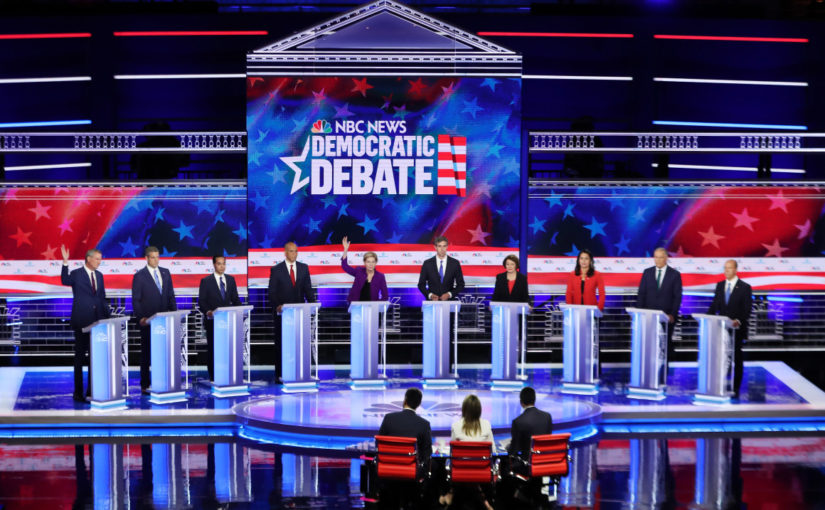Presidential candidate debates are important events that offer candidates an opportunity to be seen and heard on national television, as well as to interact with other candidates and, well… debate. It also offers the public the opportunity to watch these candidates up on stage, answering questions and hopefully interacting with each other.
The format of these debates is very important, as the wrong format or its execution can detract from the quality and very purpose of the debates themselves.
So when it came time to have a debate including the twenty (20) Democratic Presidential candidates for 2020, I felt it was important to have the right format and debate rules. Unfortunately, in my opinion these first debates failed to deliver.
To begin with, the logistics of having a debate with twenty candidates are challenging enough due to the sheer number of candidates. But to separate them into two groups of ten (10) was a mistake, in my opinion. There is no way you are going to give enough air time to each of the ten candidates up there on stage at the same time, no matter how hard the moderators may try. The way the candidates were placed, with the frontrunners toward the center and the outliers toward the ends, basically shut out the outliers to the point where they practically had to forcefully interrupt in order to get a word in edgewise, lest they not be heard from at all.
Although I missed the second group, with Joe Biden, Bernie Sanders, and Kamala Harris, I was able to see the first group. This group had Elizabeth Warren, Cory Booker, Julián Castro, and Beto O’Rourke, with the rest scattered off to the sides.
Thirty seconds to respond to a question, especially when you know you’re not going to get too many chances to speak, must seem like a nanosecond to the candidates standing off toward the edges. I felt sorry for John Delaney, who may have as well stayed home, given the lack of chances he got. The few times he spoke, I thought he spoke rather well.
I think a much better approach would have been to separate the group into four groups of five (5) candidates. That way each candidate gets more exposure, the questions and responses aren’t so hurried, and it doesn’t have the feel of a Black Friday at the neighborhood Walmart.
Apparently it is likely that the field of candidates will be decreased significantly by the next round of debates, which begs the question as to why were twenty candidates herded onstage for a free-for-all in the first place. Even if it was a foregone conclusion that many of these “fringe candidates” will not be making the cut, by having those first debates in the manner they were organized and conducted minimized the potential impact a first debate could have had.
Debates are important, as they are the only face-to-face interaction the candidates have on a grand stage, this early in the presidential campaign. It’s a shame that because of faulty logistics, the public is kept from getting the best (and worst) the candidates have to offer.
